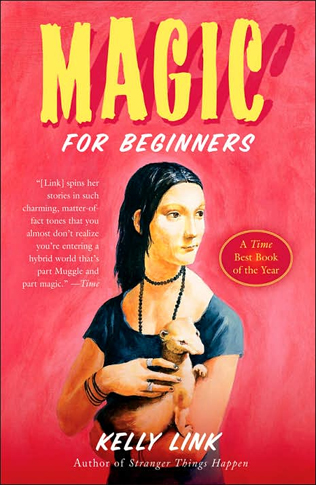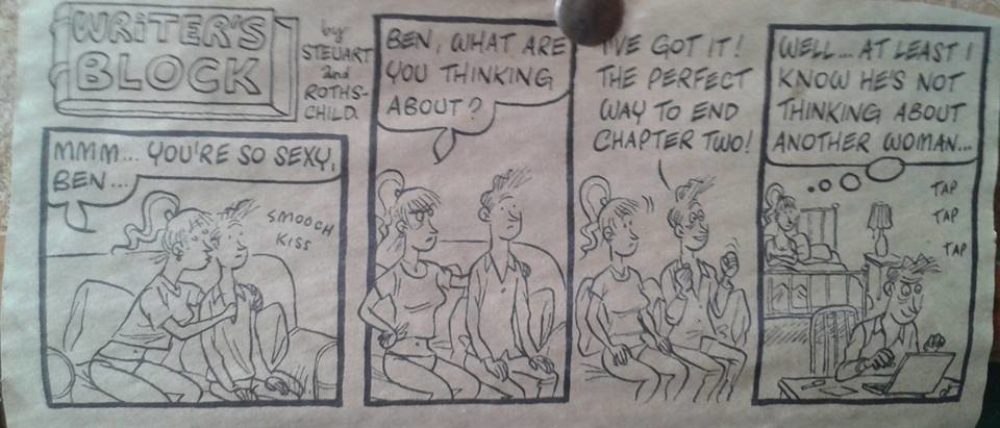
Kelly Link – Magic for Beginners
Harper Perennial, 2007, 272pp, £7.99, ISBN 978-0-00-724200-9
Neither Magic for Beginners (the anthology reviewed here) nor ‘Magic for Beginners’ (the title story, and the best of the collection) are actual primers for magic, but both are very good reference texts on writing magic for beginners. Take one element from the real world and apply the logic of a dream. Reinsert that element into the real world and now apply real-world logic to it. Don’t have anyone think it’s odd. Then write a story and see where it takes you.
Thus, in the opening and second-best story, ‘The Faery Handbag’, the inhabitants of a village from one of the ’stans on the edges of the former Soviet Union (Baldeziwurlekistan, since you ask) made a handbag out of a dog and retreated into it to avoid pillage and an earthquake. Well, of course they did, you think, and you keep reading to see what happens. All I’ll tell you is that the handbag made it to Boston accompanied by the last remaining Baldeziwurlekistanian, the narrator’s grandmother, who uses Scrabble tiles for divination.
In ‘The Hortlak’, a chasm opens to the world of the dead across the road from a 24-hour convenience store. Zombies become regular customers, wandering in to pick up bits of their former lives. The store’s manager calmly switches over to a barter economy, since zombies don’t have much cash.
And in ‘Magic for Beginners’, the nation is entranced by a TV show that, if it actually got made in our world (and it should, oh boy, it should), would have a guaranteed cult status that would sweep Lost, Buffy, Firefly and any other show you care to name into the trashcan. The Library is never shown consistently in the same timeslot or even on the same channel. It is a fantasy show set entirely in a (very large) library, where only two of the characters are ever played by the same actors from episode to episode; where ‘renegade librarians had misshelved an ancient and terrible book of magic which had never been translated’; and one episode takes place ‘inside the top drawer of a card catalog, in pitch dark, and it’s all in Morse code with subtitles’.
‘Magic for Beginners’ also scores in having the most likeable and identifiable protagonist – 15-year-old Jeremy, a typical middle class WASP boy who is not entirely in control of his life, vaguely optimistic about girls and what the future might hold, and just beginning to make his own impression on the world. His dad is a writer whose home was once invaded by a fan, who left behind her MS of a novel about the Titanic penned from the point of view of the iceberg. It happens.
But, to get back to the writing magic for beginners thing: the magic serves a purpose and the purpose is alienation. Each tale is about people coming adrift – from the world, from their family, from their friends – and in each case it’s the magic that has slipped itself between them and is slowly pushing or pulling them apart. There is always the feeling that if only they can reach across the gap, magic and all, they can bind back together again, adjusting to the new take on the world and being better off for it. Some do, some don’t.
In ‘Stone Animals’, a real estate agent moves with his family to their dream country home and finds himself unable to break free of his commitments to work back in the city. So far, so The Ice Storm or The Big Chill – middle America in personal crisis. The fact that his home, and life, is haunted by rabbits that are slowly taking over is what makes the alienation so deadly – so banal, so inevitable.
The book is beautifully written but not an easy read. The writing flows smoothly from A to B to C, but the links between them are like a well-made Inca rope bridge; they will carry you in perfect safety across the gap but there is the unnerving feeling that they could collapse at any moment. But well worth the experience all the same.
